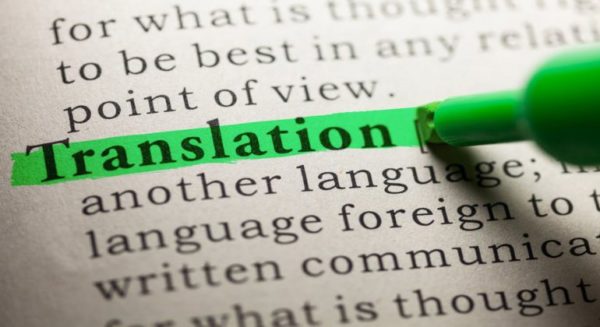Ten Major Principles For Translation Of Buddhist Sūtras (Scriptures) & Śāstras (Treatises)
翻译佛经论之十大原则
TOP TEN TEXT TRANSLATION TIPS (T5)
How translation work is systematically done at Purelanders.com:
[1] STUDY:
Study deeply the sūtra text (i.e. Buddhist scripture) of interest, on the whole, and word by word, for its meanings and implications, by itself, and with the aid of its most historically respected commentaries by great masters and proficient scholars.
If a commentary (i.e. treatise or the equivalent) is being considered for translation, there might be sub-commentaries on it that can be studied too.
Learn about the background and influence of the text too, to better appreciate its origin and influence. This will inspire more mindful and respectful translation.
[2] READ:
Read existing prominent translations if available, to further cross-check accuracy and completeness of personal understanding of the text, and to decide if personal re-translation is needed for posterity’s sake, with greater accuracy and clarity.
Due to subjective perception of words’ meanings (that can change over time) and lack of enlightenment, ideal translations might not be found, with various translations found having certain plus and minus points instead. (This is partly what drives translators to continue their re-study of original texts for re-translation over the ages.)
[3] TRANSLATE:
Translate each word or phrase as it truly means, using several multi-lingual and specialised Buddhist dictionaries for cross-reference.
Note that some words and phrases might seem ordinary, but are actually abbreviated Buddhist or cultural terms with loaded meanings. These words and phrases should not be mis-translated or ‘under-translated’.
(As an example, the word for what seems to be ‘green’ [青] in ancient Chinese is ‘[deep] blue’ in modern English.) Having continually widening learning will lessen the making of possible mistakes.
[4] CHECK:
Check each translated word or phrase chosen is with the right and best context in meaning, especially when a long list of multiple options is available.
Counter-intuitively, even ‘simple’ words taken for granted due to everyday modern usage can carry more possible obscure meanings than expected.
Unless with different nuances in meanings, be mindful to use the same words and phrases consistently to translate their corresponding original versions. Being for repeated use, this is why it is important to choose the right words and phrases in the first place.
Important terms, such as names and titles should be capitalised. Be careful with the choice of punctuation marks. For example, just as adding commas can wrongly link separate concepts, missing commas can wrongly delink related concepts. For academic completeness and formality, transliterated words translated back to the original Sanskrit terms, that carry diacritical marks.
[5] CONNECT:
Add the simplest connective words such as ‘to’ and ‘with’ [within square brackets], minimally and only when absolutely needed, as structural ‘scaffolding’ between the translated words to form complete sentences.
Use paragraphing and sectioning to group and separate concepts, so as to facilitate readers’ easier understanding and searching of the contents.
Such use of square bracketed words is academically accepted. This should be done without altering the style and meanings of the original sentences. In fact, conscientious use of square brackets can easier ensure this upon checking.
[6] ARRANGE:
Only when absolutely necessary, and most minimally, due to language awkwardness (in reading and understanding) when translated word by word sequentially, rearrange the translated sentence’s structure.
As a way to check the quality of translation, a good translation can be used with fair ease, to re-translate back to its original language, more or less in its original format.
[7] FLOW:
Read for flow of fluency of translated words and their meanings. The original style of the text should be retained as much as possible, without compromising clear expression of its meanings.
[8] DELETE:
Remove the square brackets when definitely contextually and structurally sound, for easier reading, unless to be retained as learning references for readers and other translators, and for easier personal re-editing later. There can be both versions, with and without square brackets made available.
[9] EDIT:
Translate and edit accordingly with the steps above, repeating the whole process until every absolutely needed word is in the right place, with absolutely no missing words or any wasted (i.e. excess) words.
[10] PRESENT:
Share online and/or offline by presenting the finalised translated text juxtaposed with the original text for readers’ easy reference, for them to have greater confidence in the quality of translation with personal checking.
To facilitate more thorough understanding, add comprehensive, or at least concise (foot)notes for explanations of complex technical terms and concepts.
Before publication in print, suggestions should be welcomed for more precise choice of words used in (perhaps temporarily unprintable) translations online. When mistakes are found, they should be amended immediately, lest they confuse and mislead indefinitely.
Never publish provisional translations in print, assuming they will be improved by others, because not only might they not be improved, they might even be worsened and reproduced, with no way to correct the mistakes.
BONUS TIPS [A] : FIVE UNTRANSLATED TERMS
There are said to be ‘Five Untranslated’ Terms (五不翻) noted by Great Master Xuánzàng (玄奘大师):
(1) Terms ‘With Many Meanings Thus Untranslated’ (多义故不翻):
These are only transliterated – to retain their many meanings instead of merely one, such as ‘Bhagavān’ (薄伽梵), which though often translated simply as ‘World-Honoured One’ (世尊), has six meanings – (i) One With Ease (自在), (ii) Prosperous One (炽盛), (iii) Dignity Adorned One (端严), (iv) Name Renowned One (名称), (v) Auspicious One (吉祥) and (vi) Honourable One (尊贵). (Note that multiple meanings can be listed in [foot]notes.)
(2) Terms ‘With Esoteric Meanings Thus Untranslated’ (秘密故不翻):
These are only transliterated – such as the words of mantras (神咒) and dhāraṇīs (陀罗尼), to retain their many profound meanings and specific pronunciations, though sometimes translated literally and approximately for their ‘basic’ meanings only. (Note that the ancient way of pronouncing Chinese words is different from the modern way, with the first closer to Sanskrit pronunciations, and the latter further from it.)
(3) Terms ‘For Giving Rise To Good Thus Untranslated’ (生善故不翻):
These are only transliterated – such as ‘Prajñā’ (般若), though often translated simply as ‘wisdom’ (智慧), while ‘Prajñā’ rightly refers to transcendental spiritual wisdom for liberation of one and all, not merely limited worldly wisdom. ‘Prajñā’ thus inspires more respect (尊重) and good, with the noble aspiration to realise it. Terms in this category include those that have no equivalent in the language to be translated to. (Note that full meanings can be included in [foot]notes.)
(4) Terms ‘According With Ancients’ (Customs) Thus Untranslated’ (顺古故不翻):
These are only transliterated – to emphasize their excellence, for attention and inspiration, such as ‘Anuttarā Samyak Saṃbodhi’ (阿耨多罗三藐三菩提), though sometimes translated as ‘Unsurpassable Equally Right Awakening’ (无上正等正觉). (Note that full meanings can be included in [foot]notes.)
(5) Terms ‘That This (Place) Is Without Thus Untranslated’ (此无故不翻):
These are only transliterated – to retain pronunciations to identity the specific people, culture, customs, places and items, such as a fruit native to India – ‘Āmalaka’ (庵摩罗果). This is despite it meaning the ‘pure and undefiled fruit’ (清净无垢果), which if used as its translated name, might give rise to confusion. (Note that literal meanings can be included in [foot]notes.)
BONUS TIPS [B] : SIX TRANSLATION METHODS
There are said to be six translation methods (六译法) used by Great Master Xuánzàng (玄奘大师):
(1) Supplementation Method (补充法):
Similar to above tips, add words minimally, only when needed, for clearer understanding.
(2) Omission Method (省略法):
Similar to above tips, remove words minimally, only when needed, for clearer understanding.
(3) Conjugation Method (变位法):
Similar to above tips, use conjugated verbs minimally, only when needed, for clearer understanding.
(4) Separation And Combination Method (分合法):
Similar to above tips, rearrange words minimally, only when needed, for clearer understanding.
(5) Translated Name Relied Upon Method (译名假借法):
Similar to above tips, use translated words (with other possible translations) as consistently as possible, for clearer understanding.
(6) Pronoun Restoration Method (代词还原法):
Similar to above tips, use pronouns as consistently as possible, for clearer understanding.
BONUS TIPS [C] : TRANSLATION EXAMPLES [WITH SQUARE BRACKETS]
《佛说阿弥陀经》
[The] Sūtra [In Which The] Buddha Speaks [Of] Amitā[bha Buddha]
https://purelanders.com/2019/12/31/the-sutra-in-which-the-buddha-speaks-of-amita-buddha
《称赞净土佛摄受经》
[The] Sūtra [On] Praises [Of The] Pure Land [With] Buddhas’ Protection [And] Reception
https://purelanders.com/tang
Namo Amituofo : Shen Shi’an
相关文章
Related Articles:
Considerations On Sūtra And Śāstra Translation
翻译经论之思惟
https://purelanders.com/2021/12/considerations-on-sutra-and-sastra-translation





